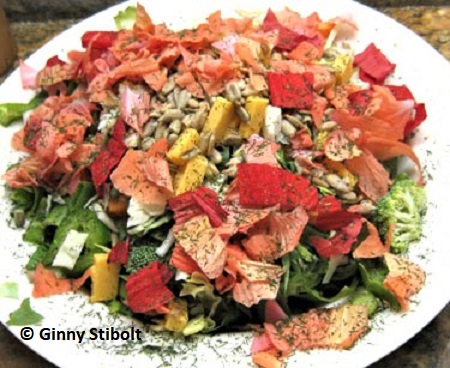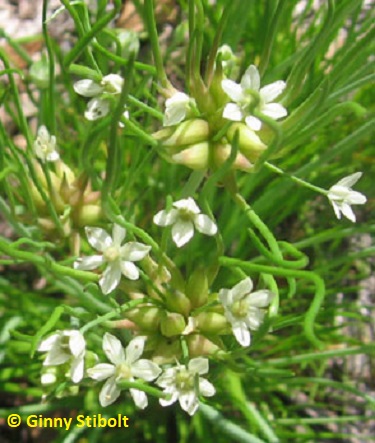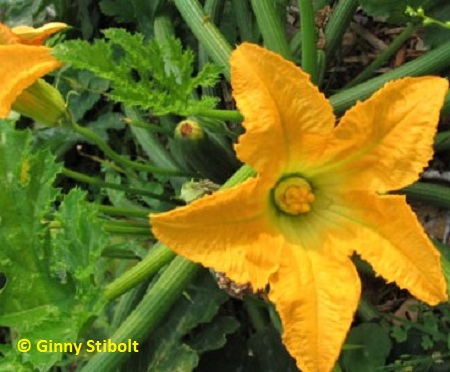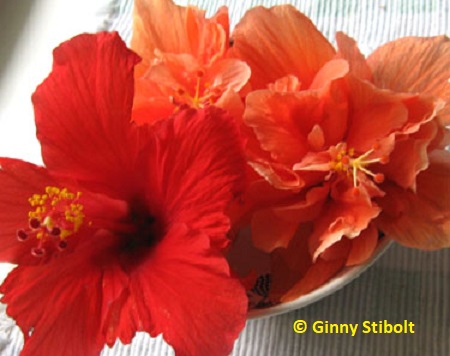Adventures of a Transplanted Gardener |
||||
Edible flowers
|
||||
 |
<< Hibiscus petals used as garnish on this salad.
I have some hibiscus (Hibiscus Rosa-sinensis) shrubs
with lovely blooms and I decided to try some as in one of our salads.
I picked the flowers early in the day and put them in a bowl of water.
When it was time to make the salad I cut the petals from the rest of
the flower. (The large reproductive parts of the flowers are often bitter
and pollen can cause an allergic reaction in people who suffer from
hay fever.) I chopped the petals into large pieces and used them on
top of the salad. The salad was quite beautiful, but the hibiscus petals
did not add much flavor.
Over the years I've used various flowers from the mint family such
as basil, monarda, rosemary, and some of the mints. Members of this
family are often found in our herb gardens anyway and are grown
as an edible crop. Mints are usually easy to spot because of their
square stems and opposite leaves. An advantage for the southern
gardeners is that our rosemary, which belongs to the mint family,
will bloom in the winter when other edible flowers may be hard to
find. Its beautiful blue flowers offer a tasty addition to winter
salads. The flowers usually have a milder version of the taste of
the vegetation.
 |
Wild-haired meadow garlic flowers are great additions to salads and stir fries. The flower heads consist of both six-petaled flowers and garlic bulblets with one curly leaf already sprouted. >>
The onion family includes the onions (Allium cepa),
chives (A. schoenoprasum), and garlic (A. sativum). All
of their flowers are edible and add not only an oniony or garlicky flavor,
but often a lovely lavender color as well. I have transplanted some
meadow garlic (A. canadense) that I found growing wild around
here in my herb garden and enjoy their light taste and their wonderful
wild-haired flower heads chopped in salads or stir-fried dishes.
Squash (Cucurbita spp.)and daylily (Hemerocallis spp.)
blossoms are traditionally used in tempura. (Don't use flowers from
other lilies such as tiger lilies, Asiatic lilies because they may be
poisonous.) With tempura, dip and twist the blossoms or buds into a
light batter and then fry them in oil until the batter is lightly browned.
I also found a couple of recipes for stuffed squash flowers where you
remove the reproductive parts in the center and stuff the blossoms with
cheddar cheese or a cheese and herb mixture, dip in a batter twisting
them to enclose the cheese, and then fry them.
 |
<< On the left, a male zucchini flower is borne on a long stalk. The female flower sits on top of a little squash.
Growing squash is easy, but if you wish to have both blossoms and squash to eat, use mostly male flowers. The female flowers have the start of a squash under them, while male flowers are borne on a narrow stalk. Sometimes a squash plant may provide so many fruits, that your neighbors might hide to avoid your gifts of more zucchinis. Harvesting some of the flowers will alleviate this overabundance.
Life is Short… Add more flowers to your menu
So do your research, treat your flowers as a crop, and
include beautiful edible flowers in your menu. You don't need to wait
for company; you can grace your plates with edible blossoms year-round
with a little planning.
Resources:
· North Carolina Extension service has an extensive chart with edible
flowers and their uses: http://content.ces.ncsu.edu/choosing-and-using-edible-flowers-ag-790.pdf.
· A Florida Extension Service article, "Roses Are Red, Violets Are Blue—And
Guess What, They Taste Good Too": http://news.ufl.edu/archive/2001/02/roses-are-red-violets-are-blue---and-guess-what-they-taste-good-too.html.
· This article has a good list of edible flowers: www.epicurean.com/articles/edible-flowers.html.
Ginny Stibolt is a life-long gardener, a botanist, a naturalist, and a garden writer. You may contact her or read more of her articles posted on her website: www.greengardeningmatters.com.
Copyright Ginny Stibolt


